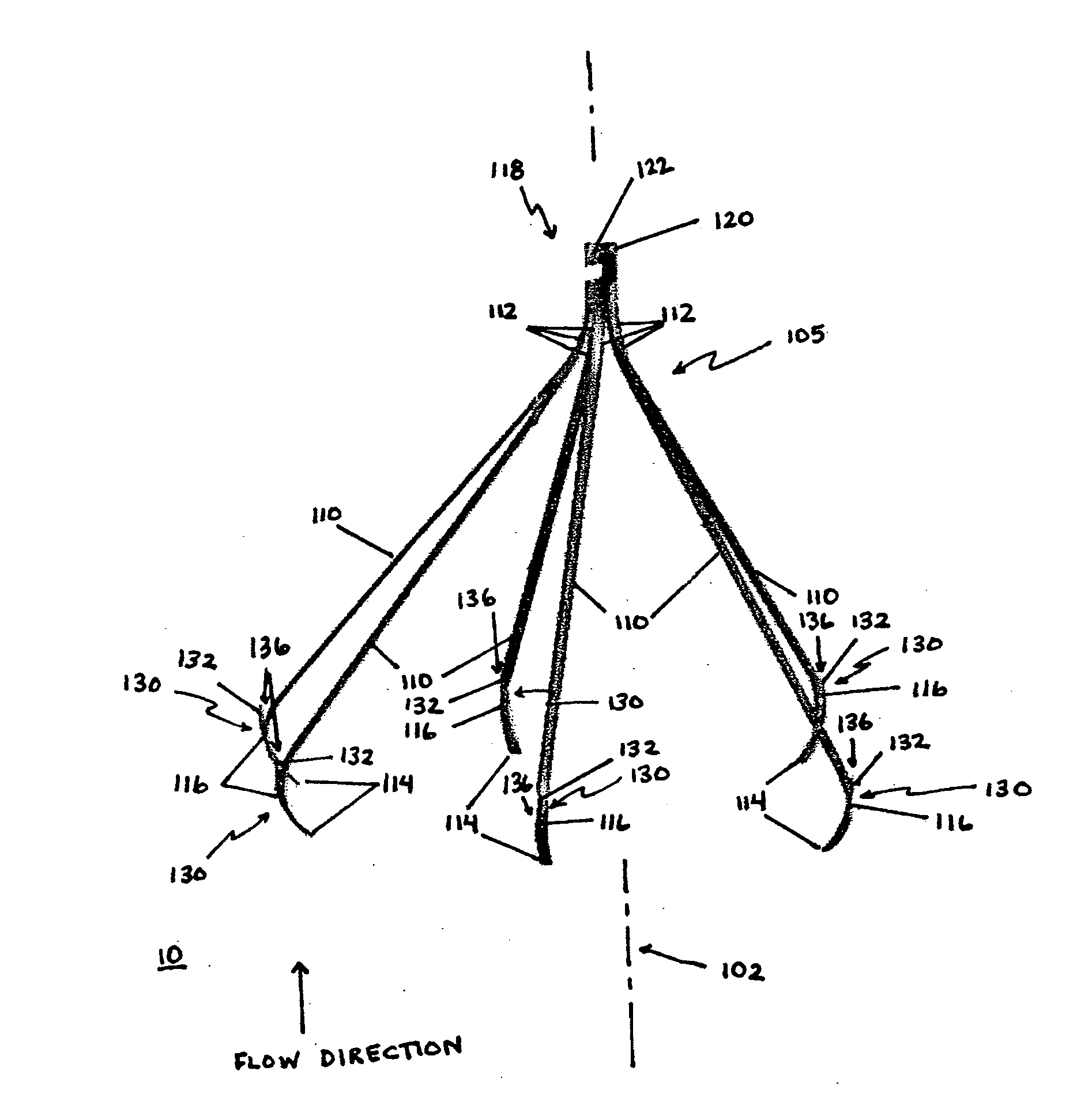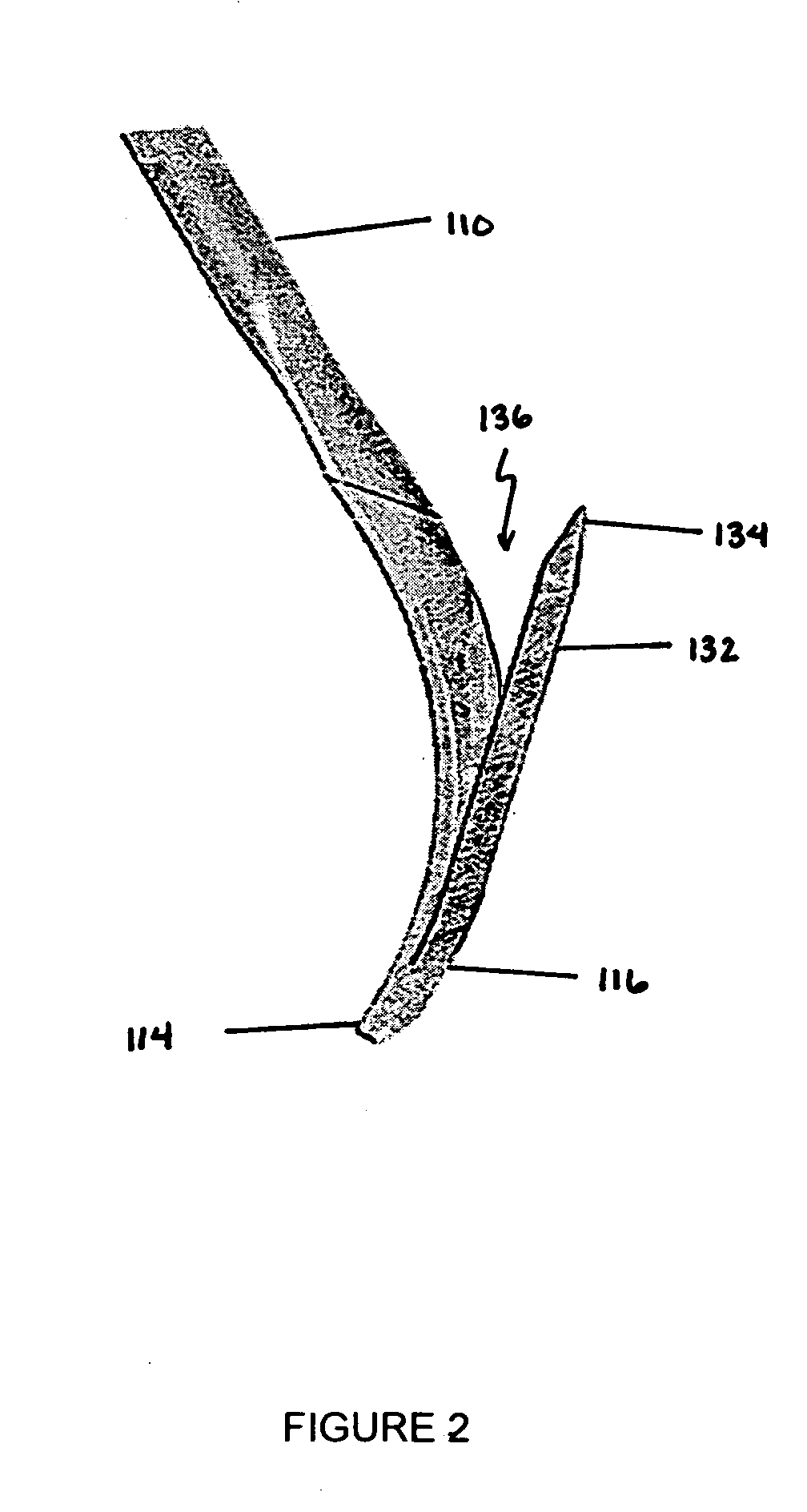Medical implant device
a technology of medical implants and implants, applied in the field of medical implants, can solve the problems of affecting the treatment of patients, and affecting the treatment effect, and achieve the effect of facilitating the removal of the implant devi
- Summary
- Abstract
- Description
- Claims
- Application Information
AI Technical Summary
Benefits of technology
Problems solved by technology
Method used
Image
Examples
Embodiment Construction
[0039]The present invention overcomes shortcomings of the known devices described above by providing improved deployment of an implant device that is secured to a vessel, or passageway, in a body. The present invention provides an attachment mechanism that permits stable and secure positioning of an implant device while also permitting easy removal without damaging the passageway. The present invention also provides a tether that works in cooperation with the attachment mechanism to facilitate removal of the implant device after an indicated period. The tether is removable from the implant device to convert the implant device from a temporary device into an optional device, which can remain permanently or be removed at a later time. Moreover, the present invention provides a centering mechanism to ensure that the implant device is properly oriented within the passageway when deployed. These, and other, aspects of the present invention are provided in further detail below.
[0040]While...
PUM
 Login to View More
Login to View More Abstract
Description
Claims
Application Information
 Login to View More
Login to View More - R&D
- Intellectual Property
- Life Sciences
- Materials
- Tech Scout
- Unparalleled Data Quality
- Higher Quality Content
- 60% Fewer Hallucinations
Browse by: Latest US Patents, China's latest patents, Technical Efficacy Thesaurus, Application Domain, Technology Topic, Popular Technical Reports.
© 2025 PatSnap. All rights reserved.Legal|Privacy policy|Modern Slavery Act Transparency Statement|Sitemap|About US| Contact US: help@patsnap.com



